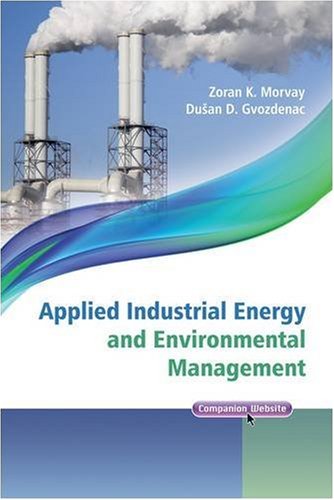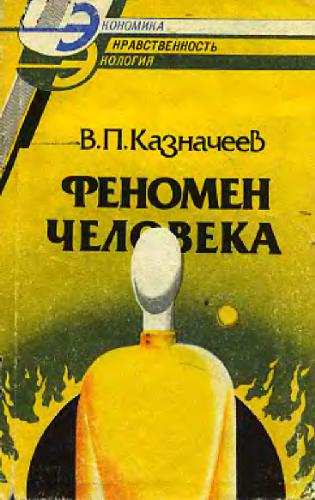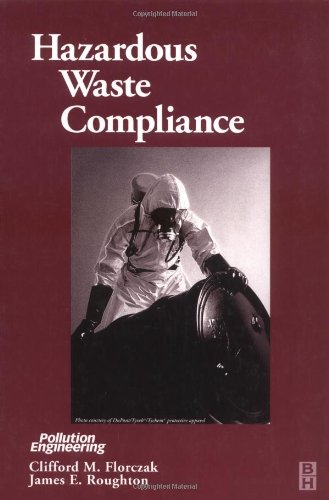Zoran Morvay, Dušan Gvozdenac0470697423, 9780470697429, 9780470714386
Applied Industrial Energy and Environmental Management provides a comprehensive and application oriented approach to the technical and managerial challenges of efficient energy performance in industrial plants. Written by leading practitioners in the field with extensive experience of working with development banks, international aid organizations, and multinational companies, the authors are able to offer real case studies as a basis to their method. The book is divided into three main parts:
Part one describes Energy and Environmental Management Systems (EEMS) in current use and management techniques for energy and environmental performance improvement.
Part two focuses on the engineering aspects of industrial energy management, describing main industrial energy systems and how to analyse and improve their energy performance.
Part three is the TOOLBOX on an accompanying website, which contains data, analytical methods and questionnaires as well as software programs, to support the practical application of the methods elaborated on in the first two parts of the book.
This book will be a valuable resource to practising energy and environmental management engineers, plant managers and consultants in the energy and manufacturing industries. It will also be of interest to graduate engineering and science students taking courses in industrial energy and environmental management
Table of contents :
Applied Industrial Energy and Environmental Management……Page 3
Contents……Page 9
About the Authors……Page 19
Preface……Page 21
1 Introduction……Page 25
2 Energy Use by Industrial Operations……Page 26
3 Environmental Impacts of Industrial Operations……Page 30
4 End Use Energy Efficiency……Page 33
5 Efficiency of Using Raw Materials……Page 34
6 Global Energy Policy Framework……Page 35
7.3 Consumers’ Choice in the Liberalized Energy Market……Page 38
7.4 Emissions Trading……Page 39
7.5.1 ENCON Program in Thailand……Page 40
8 Industries’ Self-Motivation for Effective Energy and Environmental Performance……Page 41
9 Environmentally Responsible Investing……Page 43
10 Where to Look for Energy and Environmental Performance Improvements……Page 44
11 Bibliography……Page 45
Part I: Energy and Environmental Management System in Industry (EEMS)……Page 47
1.1 Introduction……Page 49
1.2.1 System……Page 50
1.2.2 Management……Page 51
1.2.3 Performance……Page 52
1.2.4 Information……Page 53
1.2.6 Knowledge……Page 54
1.2.8 Environmental Impacts……Page 55
1.2.10 Environmental Performance……Page 56
1.2.11 Performance of Materials Use……Page 57
1.2.13 Energy Management……Page 58
1.3 Energy and Environmental Management System……Page 59
1.5 Dynamics of Energy and Environmental Management……Page 61
1.6 Human Aspects of Energy and Environmental Management……Page 62
1.6.1 Change……Page 63
1.6.2 Aspects of Change……Page 64
1.6.4 Unawareness of Opportunities……Page 65
1.6.6 Motivating People……Page 66
1.6.7 Providing Leadership……Page 67
1.6.8 Top Management’s Visible Commitment to EEM……Page 70
1.6.9 Decisions to be Made……Page 71
1.6.10 Visibility……Page 72
1.6.11.1 Managers……Page 73
1.7.1 Management……Page 74
1.7.2 Technical Managers and Supervisors……Page 76
1.7.3 Awareness and Motivation for all Employees……Page 77
1.8 Bibliography……Page 78
2.1 Introduction……Page 79
2.2 Interactions between Energy and Production……Page 80
2.3 Energy Cost Centers……Page 81
2.4 Assigning Responsibilities for Energy and Environmental Performance……Page 84
2.5 Performance Measurement System……Page 85
2.5.4 Data Verification……Page 87
2.5.5 Measurement Frequency……Page 89
2.5.8 Energy Performance Indicators……Page 90
2.5.9 Data Adequacy……Page 93
2.5.11 Environmental Performance Indicators……Page 94
2.5.11.1 Integrated Pollution Prevention Control……Page 96
2.5.11.4 Emissions Trading……Page 98
2.5.11.5 Global Reporting Initiative……Page 99
2.6 Effective Use of Energy and Environmental Performance Indicators……Page 102
2.7 Concept of Energy and Environmental Management System……Page 104
2.8.1 External Context……Page 105
2.8.2 Internal Context……Page 107
2.8.3 Factors that Influence Energy and Environmental Performance……Page 109
2.9 Bibliography……Page 110
3.2 Energy/Production Relationship by Design……Page 111
3.3 Energy/Production Relationship by Standard Operational Procedure……Page 113
3.4 Presenting the Dynamics of the Energy/Production Relationship by Scatter Diagram……Page 115
3.5 Interpretation of Energy/Production Data Pattern on the Scatter Diagram……Page 118
3.6 Statistical Methods for Energy/Production Variability Analysis……Page 122
3.6.1 Regression Analyses……Page 123
3.6.2 Correlation Analyses……Page 125
3.7 Meaning and Use of the Regression Line in Energy Performance Evaluation……Page 126
3.7.1 Quantifying and Understanding Energy/Production Variability……Page 127
3.7.2 Fixed and Variable Energy Consumption……Page 130
3.7.3 Specific Energy Consumption……Page 131
3.8 Summary of Presenting and Analyzing the Energy/Production Relationship……Page 132
3.9 Bibliography……Page 133
4.1 Evaluation of Past Performance……Page 135
4.2 Energy and Environmental Auditing……Page 137
4.2.1 Scope of Energy Audit……Page 138
4.3.1 Qualitative Evaluation……Page 141
4.3.2 Quantitative Evaluation……Page 143
4.4.2 Data Collection on Energy Consumption……Page 145
4.4.4 Specification of Major Utilities and End-Use Equipment……Page 147
4.4.5 Data Collection on Environmental Impacts……Page 149
4.4.6 Assessing On-Site Metering and Control Equipment……Page 150
4.4.8 Timing……Page 151
4.4.12 Economic and Financial Analysis……Page 153
4.4.13 Presentation of Audit Results……Page 154
4.5 Setting a Baseline for Monitoring Performance Improvements……Page 157
4.6.1 Setting Targets at the Company’s Level……Page 158
4.6.3 Targets for Different Products……Page 159
4.7 Monitoring Energy and Environmental Performance……Page 160
4.8 Verifying Performance Improvements – CUSUM Technique……Page 162
4.9 Moving Toward Targets – Process of Change……Page 168
4.10 Bibliography……Page 169
5.1 Introduction……Page 171
5.3 Preparation and Planning……Page 173
5.3.1 Energy and Environmental Policy……Page 174
5.3.3 EEMS Organization……Page 178
5.4 Implementation Plan……Page 181
5.4.1.1 Awareness and Motivation……Page 182
5.4.1.2 Training……Page 184
5.4.2 Installation of Performance Measurement System……Page 187
5.4.3 Target Setting……Page 188
5.5 EEMS Operation……Page 190
5.5.1.1 Evaluation of Operational Practice……Page 193
5.6.1 Learning Cycle……Page 195
5.7 Continuity and Communication……Page 197
5.8 Integration of EEMS with Business Management System……Page 199
6.1 Introduction……Page 201
6.2 Integrated Performance Management in Operations……Page 203
6.3 Strategic Aspects of Performance Management……Page 207
6.3.1 Identifying External Factors Influencing Performance……Page 208
6.3.1.1 Identifying Technological Changes……Page 209
6.3.2 Organizational Fragmentation……Page 213
6.3.2.1 Data Fragmentation……Page 214
6.4 Integrated Performance Measurement System……Page 215
6.4.1 Knowledge Discovery……Page 219
6.5 Integrated Performance Management……Page 220
6.6 Conclusion……Page 225
6.7 Bibliography……Page 226
Part II: Engineering Aspects of Industrial Energy Management……Page 227
1.1 Introduction……Page 229
1.2 Industrial Energy Systems Analysis……Page 231
2.1.1 Boilers……Page 235
2.1.3 Steam End-users……Page 236
2.2 System Performance Definition……Page 237
2.2.1 The Cost of Steam……Page 238
2.3.1 Performance Improvement Opportunities……Page 241
2.3.2 Example 1: Steam System Energy Performance Analysis……Page 242
2.4 Analysis of Boiler Performance……Page 247
2.4.1 Direct (Input/Output) Method……Page 249
2.4.2.1 Heat Energy Loss due to Flue Gas……Page 251
2.4.2.3 Heat Energy Loss due to Mechanically Incomplete Combustion……Page 254
2.4.2.4 Heat Energy Loss due to Radiation……Page 255
2.4.2.6 Heat Energy Loss due to Blow-down……Page 256
2.4.3 Preparing a Measurement Plan for Boiler Performance Analysis……Page 257
2.5.2 Boiler Design……Page 260
2.5.3.2 Water-side Fouling……Page 262
2.5.4 Boiler Operation Controls……Page 264
2.5.5 Water Quality……Page 267
2.6 Opportunities for Boiler Performance Improvement……Page 270
2.6.1 Combustion Efficiency Improvement……Page 271
2.6.3.1 Heat Recovery from Flue Gas……Page 273
2.6.3.3 Heat Recovery from Boiler Blow-down……Page 274
2.6.5 Boiler Control System Improvement……Page 275
2.7.1 Software 4: FUELS, COMBUSTION AND ENVIRONMENTAL IMPACTS……Page 276
2.7.3 Software 7: EFFICIENCY OF STEAM BOILERS……Page 278
2.7.5.1 Facility Description……Page 280
2.7.5.2 Steam Generation and Fuel Consumption……Page 283
2.7.5.3 Measurements, Technical Calculations and Analysis……Page 284
2.7.5.4 Best Operation Practice……Page 285
2.7.5.5 Efficiency Calculation Based on Measured Values……Page 287
2.7.5.6 Summary of Performance Improvement Measures (PIMs)……Page 289
2.8.1 Values to be Monitored……Page 292
2.9.1 Steam Distribution System Performance Analysis……Page 295
2.9.2 Influencing Factors on Steam Distribution System Performance……Page 296
2.9.2.2 Insulation……Page 297
2.10 Condensate Return System……Page 298
2.10.1 Flash Steam Recovery……Page 299
2.10.2 Performance Improvement Opportunities……Page 300
2.10.4 Example 3: Steam and Condensate System Insulation Improvements……Page 301
2.10.5 Performance Monitoring of Steam Distribution and Condensate Return System……Page 304
2.11.2 Water Pollution……Page 305
2.12 Bibliography……Page 307
3.1 Introduction……Page 309
3.3.1 Active and Reactive Power and Power Factor……Page 310
3.3.2 Load Diagram……Page 312
3.3.4 Power and Energy……Page 313
3.3.6 Quality of Power Supply……Page 314
3.4 Tariff System……Page 316
3.5.1 Transformers……Page 317
3.5.3 Electric Motors……Page 318
3.6 Performance Assessment of Industrial Electric Power Systems……Page 321
3.7 Performance Improvement Opportunities……Page 324
3.7.2 Demand Control……Page 325
3.7.2.1 Example 1: Demand Control by Stand-by Diesel Generators……Page 327
3.7.2.2 Example 2: Relation between Load Factor, Demand Charges and Total Electricity Costs……Page 329
3.7.3 Power Factor Correction……Page 330
3.7.3.1 Example 3: Power Factor Correction from 0.6 to 0.9……Page 331
3.7.4.1 Variable Speed Drives (VSD)……Page 332
3.7.4.2 Correct Operational Procedure……Page 333
3.7.4.3 Example 4: Comparison of Fan Operations with Constant and Variable Speed Control……Page 335
3.8 Maintenance Considerations……Page 339
3.9.1 Power Quality Indicators……Page 340
3.9.2 Electric Motor Drives – Maintenance Needs Indicators……Page 341
3.9.3 Electric Motor Drives – Operational Practice Indicators……Page 342
3.10 Environmental Impacts……Page 343
3.10.1 Polychlorinated Biphenyls (PCBs)……Page 344
3.11 Bibliography……Page 345
4.1 System Description……Page 347
4.1.1 Compressors……Page 348
4.1.4 Water Removal……Page 349
4.2 Performance Analysis……Page 351
4.2.1 Compressor’s Performance Graph……Page 352
4.2.2 Measurements……Page 353
4.2.2.3 Flow Rates……Page 354
4.2.2.5 Compressed Air Leakage Determination……Page 355
4.3.2.1 Compressors……Page 357
4.3.2.2 Control of Compressed Air Quality Standard……Page 360
4.3.3.2 Control System……Page 361
4.3.3.4 Waste Heat Recovery……Page 363
4.4.1 Values to be Monitored……Page 364
4.5 Example: Detailed Energy Audit of Compressed Air System……Page 365
4.5.1 System Inspection, Testing and Fault Finding……Page 367
4.5.1.1 Activities before the Plant’s Shut-down……Page 368
4.5.1.2 Air Leak Test (during Shut-down)……Page 369
4.5.1.3 Average Power of Compressor……Page 372
4.5.1.4 Air Leak Test of Distribution Network (Non-Production Period)……Page 373
4.5.1.5 Pressure Drop……Page 374
4.5.1.7 Recommendations……Page 375
4.6.1 Load/Unload Test……Page 376
4.6.2 Pump-up Test……Page 377
4.7 Bibliography……Page 378
5.1 Description of System……Page 379
5.1.1 Principles of Operation……Page 380
5.1.1.1 Vapor-Compression Refrigeration……Page 381
5.1.1.2 Vapor-Absorption Refrigeration……Page 384
5.2 Performance Definitions……Page 385
5.2.1.1 Evaporating Temperature……Page 388
5.2.1.2 Condenser Temperature……Page 389
5.2.1.4 Auxiliary Power……Page 391
5.2.1.6 Part-Load Operation……Page 392
5.3 Performance Analysis……Page 395
5.4.1 Maintenance……Page 397
5.4.2 Control System……Page 398
5.5.1 Values to be Monitored……Page 400
5.5.2 Software 11: Refrigeration Systems Analysis (Vapor-Compression Cycles)……Page 401
5.5.3 Software 10: Cooling Towers Calculation……Page 403
5.6.1 Basic Data on Chilled Water System……Page 405
5.6.3 Data Collection, Measurement and Analysis……Page 406
5.6.4 Performance Improvement Measures (PIM)……Page 414
5.6.5 Cost Benefit Analysis……Page 416
5.7 Bibliography……Page 417
6.1 System Description……Page 419
6.2 Principles of Operation……Page 421
6.3 Types of Industrial Cogeneration Plants……Page 422
6.3.2 Thermally-Activated Technologies……Page 425
6.4 Operational Modes of Cogeneration Systems……Page 429
6.5 Performance Definition……Page 430
6.6 Factors Influencing Performance……Page 431
6.6.1 Load of Cogeneration Plant……Page 432
6.6.2 Load Duration Curve……Page 433
6.7.1 Capital Cost……Page 435
6.7.2 Operating and Maintenance Costs……Page 436
6.7.3 Overall Economics of Cogeneration Projects……Page 437
6.10 Environmental Impacts……Page 439
6.11 Case Study: Drying Kiln (Gas Turbine Operation Philosophy Improvement)……Page 441
6.11.1 Facts……Page 442
6.11.2 Description of Kiln……Page 443
6.11.3 Objectives of Analysis……Page 444
6.11.4 Measurement, Technical Calculation and Analysis……Page 445
6.11.5 Energy Performance Improvements……Page 448
6.12 Bibliography……Page 450
Part III: Toolbox – Fundamentals for Analysis and Calculation of Energy and Environmental Performance……Page 453
Index……Page 455







Reviews
There are no reviews yet.